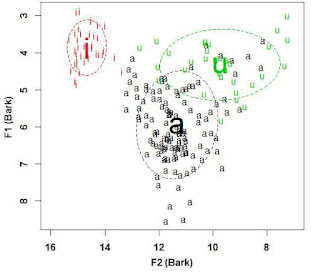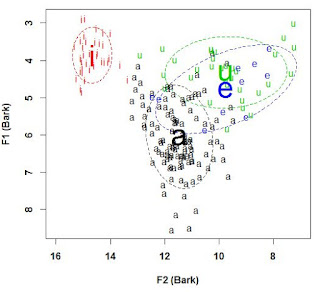Rhoticity involves producing the [r] sound whenever 'r' occurs in the spelling, including at the end of words such as 'car' and before a consonant in words such as 'park'. RP British English is non-rhotic, as there is no [r] sound in these words.
Early accounts of the pronunciation of Brunei English written in the 1990s make no reference to rhoticity, but it is not clear if Brunei English was non-rhotic at the time or if the occurrence of [r] was not regarded as important enough to merit discussion. And it is hard to get hold of recordings to check on the extent of rhoticity at that time.
More recent accounts suggest that about half of university undergraduates have a rhotic accent, and furthermore, it is believed that the incidence of rhoticity is increasing. But how can we check this?
My PhD student, Nur Raihan Mohamad, has recorded three groups of speakers: secondary school students, university undergraduates, and in-service teachers. If we find that the younger speakers are more rhotic than the older ones, this provides evidence that rhoticity is increasing. But there is a problem with this: the school students are less well-educated than the undergraduates, and it is possible that this has an impact on rhoticity.
However, there is an alternative approach. We now have recordings of university undergraduates made between 2007 and 2010 and some more recent recordings made in 2016, so we can compare these two sets of recordings and thereby find out if rhoticity is increasing.
One issue is that knowledge of whether the recording is older or more recent might impact on judgements. So I randomised the order of 21 early recordings and 21 more recent recordings, and then Nur Raihan listened to them and judged whether each speaker was rhotic or not. (She also tried to guess whether the recording was an early one or a later one, and she was basically unable to guess that correctly.)
The results of her listening are shown in this table:
These results clearly show that rhoticity in the more recent recordings is much higher than in the earlier ones: while about half of the earlier speakers had a rhotic accent (as expected), all but two out of twenty-one of the speakers in the more recent recordings were rhotic. This is really surprising: it is rare to find such a shift in patterns of pronunciation over just seven years.
To confirm the results, we asked another research student, Sufi Redzwan, to repeat the listening. And he got exactly the same results: about half of the early recordings were rhotic, while all but two of the more recent ones were. So it is confirmed that rhoticity has increased substantially over the past few years.
This work is written up as Nur Raihan (2017) – see here.






















